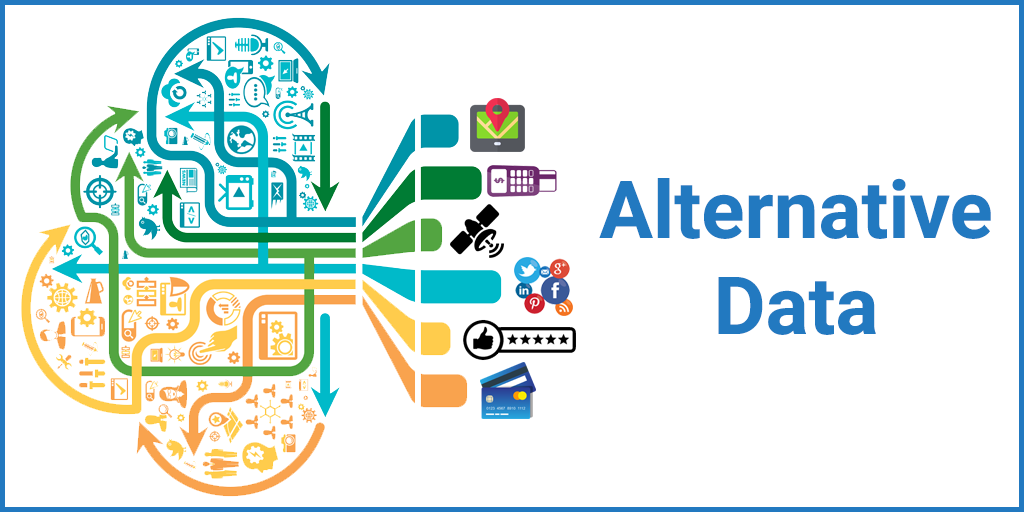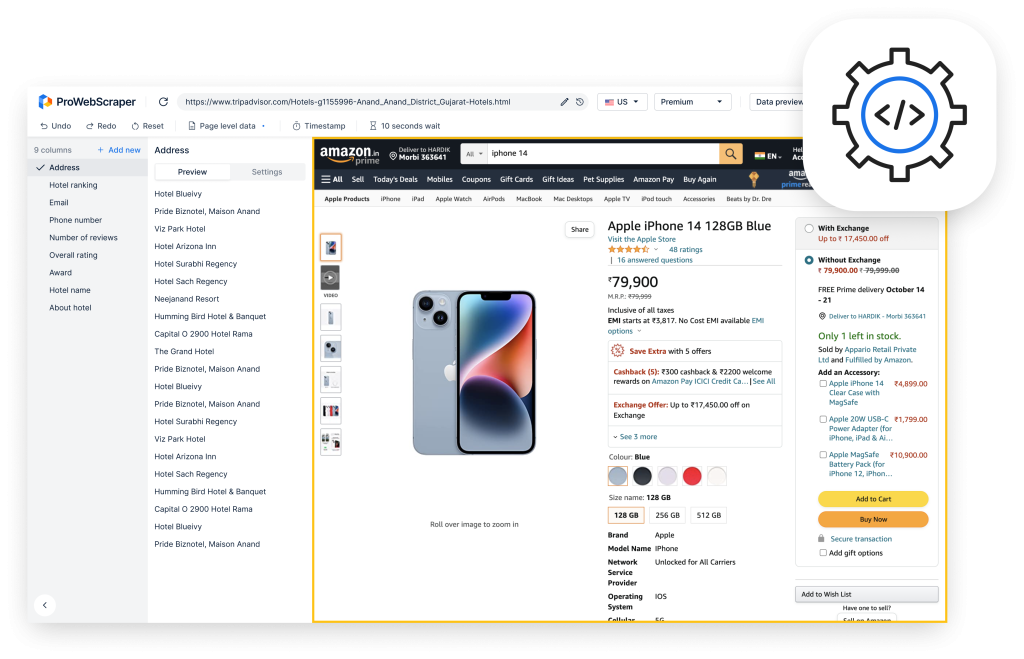
Introduction
In the world of business, it’s all about a competitive edge. As long as you have a competitive edge, you can race ahead and accomplish phenomenal growth.
Until recently, data was considered to be such an edge. However, as businesses have all got the same kind of access to the traditional sources of information, the question is, how to acquire an edge over others?
In comes Alternative Data!
Yes, Alternative Data is the new wave in the world of data. It’s something that big businesses have begun to leverage to get ahead of the market.
Don’t get me wrong. It’s not the replacement of the good old data. It’s just something that complements the traditional data and powers your decision-making.
Since Alternative Data has found some of the fascinating applications in a wide array of areas, it has emerged as the new buzzword in the world of business and industry.
This is the reason why Alternative Data could turn out to be the game changer for business strategy and growth in the times to come.
However, you might wonder what Alternative Data actually implies and what it means for the world around us.
No worries.
We have put together this tutorial of Alternative Data that details its salient aspects and varied applications.
What is Alternative Data?
Alternative Data is a kind of data that is derived from non-traditional sources. What qualifies as alternative data would differ depending on which industry you operate in. It will also depend on the kind of information sources that your competitors are using. Your alternative data would be data which is non-traditional and less explored by others.
While most businesses have their firm hold on traditional data, there’s a lot of data that still needs to accessed and processed.
You might wonder what kind of data it is.
Well, with the growing use of mobile devices, satellites, websites, sensors, there’s a huge stockpile of data that is being created. It has led to large chunks of structured, semi-structured and unstructured data. This is not the traditional data that businesses use for decision-making. However, this data has the potential to complement and assist the decision-making.
Data gathered from the varied sources mentioned above is what is called Alternative Data.
At times, Alternative Data can provide insights where the traditional data sources may fail. This is precisely why there’s a growing emphasis on gathering Alternative Data. Once collected, Alternative Data can then be mined for business insights.
8 Vital Types of Alternative Data
The following infographic is about the types of alternative data:

3 Major Ways to Access Alternative Data
As mentioned earlier, Alternative Data is derived from a variety of sources such as mobile devices, websites, satellite images, etc. It means that one would encounter vast quantities of unstructured data. Accessing Alternative Data would require mining this unstructured data and glean actionable insights.
There are three major ways to get hold of alternative data.
One would be to get a data scientist on board. You will need to have a data scientist who will churn these large chunks of data in order to eventually come up with the insights you need. However, it depends on your budget because an average data scientist would cost you $100,000 or more per year.
Second would be to team up with a third-party specializing in this kind of niche such as Alternative Data. All you need to do is state your needs and they will procure the Alternative Data that you need. It could be product reviews or online browsing activity or any other type of Alternative Data. This would also come at a cost because this sort of firms would charge hefty fees for providing Alternative Data.
Third would be to get hold of some robust web scraping software that can extract any and every kind of data that you need. This is relatively more cost-effective as it’s a one-time expense. It could help you customize and provide tailor-made Alternative Data that you need. It can save a lot of time and energy of coordinating with an outside agency when you have the software right with you.
In these diverse ways, it is possible to access Alternative Data and glean the valuable insights you need for your business. Depending upon your specific requirements and budget, you can leverage any of these ways.
15+ Reasons Why Alternative Data is Important?
There are diverse and interesting applications of Alternative Data that are being explored at the moment. Alternative Data is likely to influence all possible fields in the next few years because of its potential for providing actionable business intelligence.
Some of the potential use cases are as follows:
1. Powering the Advertising
Alternative Data can be massively useful in the field of advertising and its potential is yet to be fully explored. As it is well-known, online browsing is one of the top sources of Alternative Data. For instance, it is possible to track online browsing habits in order to study consumer interests related to different product categories over a period of time. This can throw up new insights related to how consumers interact with different product categories and how advertising campaigns can be aligned to this.
2. Tracking Corporate Revenues through Web Data
If one tracks the purchase confirmation web pages, it is possible to estimate the company revenues. It is also possible to track mobile app usage to find out the number of downloads and the time spent on these apps. It can be used to glean insights regarding the popularity of diverse mobile apps, mobile games, social media platforms, e-commerce platforms, travel and hospitality services, and financial services. This kind of Alternative Data can make it easy to track the trends and customize the decision-making accordingly.
3. Charting Business Risks
By tracking credit quality and applying machine learning techniques to the big chunks of data gathered through different sources, it is possible to find out which companies are at a higher risk of failing financially. At times, Natural Language Processing algorithms are used to decode the corporate communication text data for similar purposes. A number of business insights can be derived in this way by leveraging Alternative Data.
4. Tracking Credit
There is a lot of data related to loan issuance, default levels, loan pricing, borrower credit quality. This data can be mined for actionable insights. It is also possible to track overall credit quality in specific countries. This enables one to understand the credit cycle properly and pan out the credit strategy befittingly.
5. Understanding Consumer Purchase Behavior
This data draws heavily from three different sources such as merchant level transaction data, product-level purchase data, and macro-level data. The merchant level transaction data would include data from retailers, airlines and varied service providers. The product level of purchase data would include electronics, foods, beverages, etc. This data can be analyzed in different ways. While it could be analyzed to study the revenues, it could also be used to understand consumer purchase behavior.
6. Employment and HR Trends
With the advent of job listings, now there’s data regarding jobs available. This sort of data can be mined in order to derive insights regarding how a particular industry is growing, changes in corporate strategy and direction and demand for particular skills. HR issues such as employee turnover rates in specific companies can also be studied using this data.
7. Environmental, Social and Governance (ESG)
When it comes to ESG standards at a company, Alternative Data can offer a lot of interesting insights. It is possible to monitor the ESG criteria using social media, satellite and public data, etc. Even monitoring the sources that capture business complaints, employee compensation, business reputation, and hiring trends can also be quite helpful.
8. Decoding Expert Views
While sentiment analysis in the general sense is important, it is also important to monitor how experts think about different issues. They may have specific inputs that may be different from the general trends. Natural Language Programming (NLP) can be helpful in summarizing the sentiment contained in the vast variety of niche blogs and other platforms wherein experts’ ideas get expressed. Such an analysis can then be used to formulate a view of the given situation and a strategy can be worked out accordingly.
9. Tracking the Business Growth through Location
Location data has emerged as one of the vital sources of Alternative Data. When one looks at the location data of people, it becomes quite easy to analyze the visitation trends. Amusement parks, restaurants, retailers, hotels, transportation, etc. can provide valuable data in this regard. Based on this, it is possible to identify the impact of promotions, marketing, brand loyalty, etc.
10. Connecting the Dots of Business through the Internet of Things (IoT)
A lot of data is derived from devices connected to the Internet. Sensors can provide diverse kinds of insights related to traffic, activity around warehouse distribution centers, agricultural crop health, track flow volumes in oil and gas pipelines. This will enable better and more effective decision-making.
It’s still work in progress, with different kinds of sensors, it would be possible to get more data that can offer new insights.
11. Analyzing Online Search for Consumer Interest
Online search is yet another powerful source of Alternative Data as search engine captures a lot of data regarding search behavior. The volume of search can throw some light on economic activity. It can also be interpreted as an indicator of consumer interest in a product or topic. Search engines can throw up a lot of Alternative Data as it contains 10 years of search history which can then be utilized to provide new insights regarding terms and search trends.
12. Following Revenue Trail through Pricing
Pricing data of goods and services for businesses as well as consumers is now available for access in a way it was not available earlier. This kind of data can offer new insights into revenues of corporate and industry competition. Through web crawled pricing data, it has been possible to create alternative measures of inflation as well.
13. Mining the Public Sector Data for Socio-Economic Insights
Governments keep publishing large datasets which can be used to churn out new inputs in terms of social-economic activity and industry dynamics. This data comes in different varieties. It could be granular at the local level and it could be aggregated at the national level. Hence, it becomes unwieldy to handle this data. However, if studied carefully, it is possible to glean new insights that nobody has mined it before.
14. Analyzing Reviews and Ratings for Spotting Business Trends
With several sites for reviews and ratings of products and services, there’s a lot of data accumulating on the web. This data can be mined for different trends and topics. The reason why reviews and ratings matter is because when consumers post positive reviews, it leads to increase in sales. Likewise, negative or poor reviews can lead to decline in sales. Hence, the data related to reviews and ratings could help gauge the trend.
15. Tracking the Economic Activity through Satellite Images
Asset managers find the data related to satellite images useful in a number of ways. Particularly in developing countries, it becomes easier to trace industrial activity using the data models derived from satellite data. It can be used to monitor activity at construction sites, mines, plants, and retail locations. Using satellite data, it is possible to gauge oil and gas inventories and production. It is also possible to forecast the quality of agricultural harvests.
16. Analyzing the Sentiment
Mining news feeds and social media posts is a well-known way to gauge sentiment. Whether it is investor commentary, consumer attitudes toward products and brands or mainstream news feeds, sentiment scoring can be applied to an array of avenues.
17. Gleaning Brand Insights from Social Media
Alternative Data gleaned from social media platforms can be used to analyze how brand loyalty works, how product launches are received, whether customer satisfaction is on the rise or decline, to track product sales and promotions, to trace the political and social movements and customer engagement.
18. Connecting Store Locations to Business Growth
It is possible to analyze store locations in order to understand corporate growth and strategy. It becomes particularly effective when one tracks the store hours and promotions. It is also possible to assess market size and saturation using this data.
19. Understanding Supply Chain through Trade Datasets
When it comes to balance of payment estimates, insights into commodity markets, indications of national competitive advantages and indications of consumer strengths, Alternative Data related to trade comes in quite handy. It is also used to study the supply chain activity of different companies. Using trade related to Alternative Data, it is also possible to analyze the activities of transportation companies and ports.
Conclusion
Alternative Data is still an emerging phenomenon.
While some of the applications are already getting popular, newer and more unusual applications would emerge as time progresses and the need for new insights emerge.
At the moment, some of the world’s leading companies may be leveraging these applications. However, many companies have yet to access and analyze Alternative Data.
Nonetheless, it is equally true that there’s no escape from the growing influence of Alternative Data.
As companies compete more fiercely in the times of come, Alternative Data will emerge as the competitive advantage for those who can leverage it.
So if you want to race ahead of the market, capitalize on Alternative Data and gain a rare, competitive edge!!!

